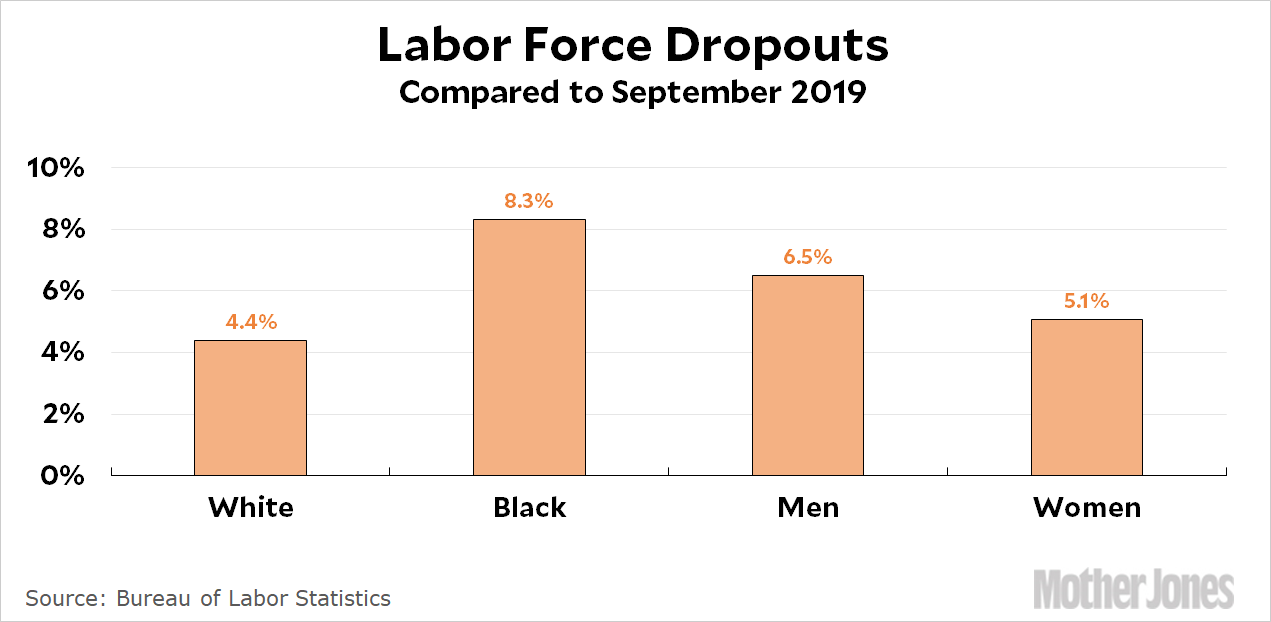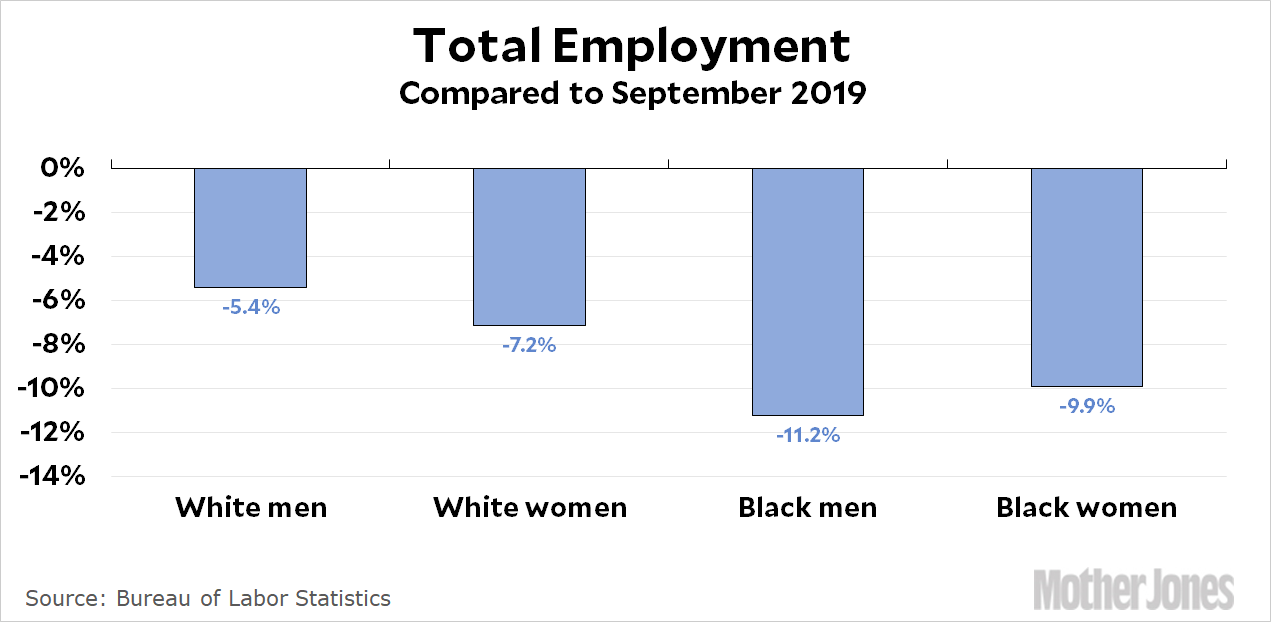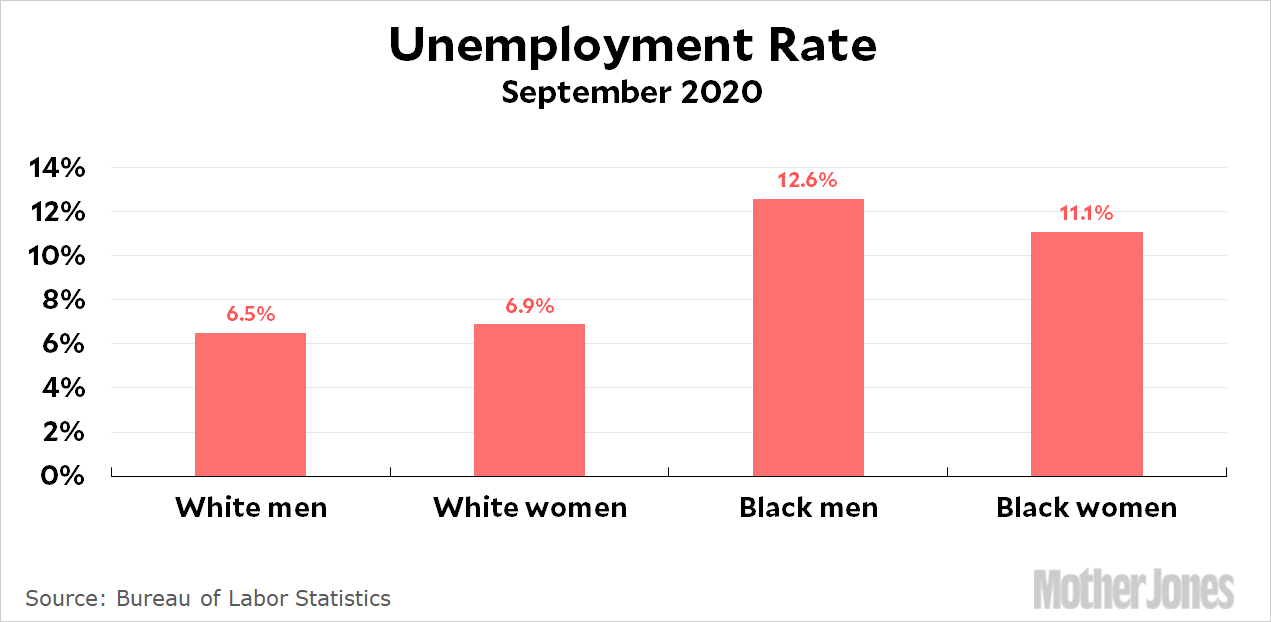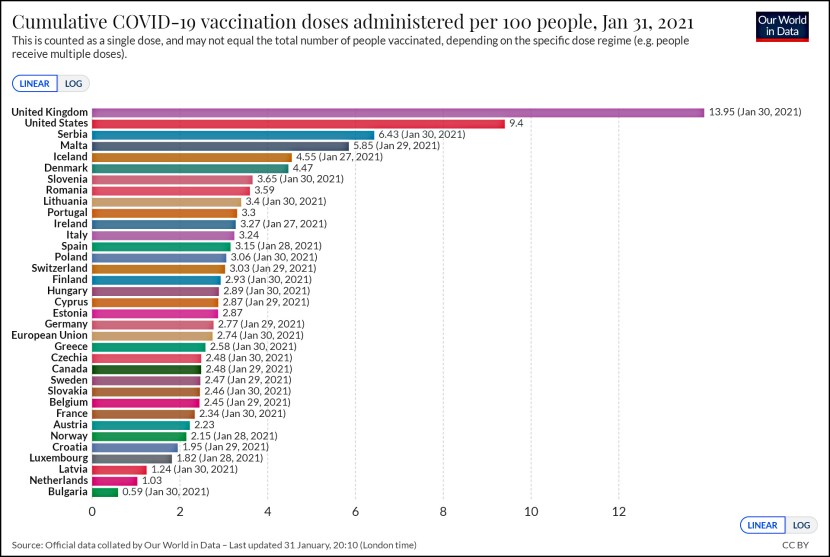The unemployment rate can go down for two reasons: Either more people have jobs or else more people have dropped out of the labor force and are no longer counted as unemployed. “Dropped out” means they’ve given up and are no longer looking for work.
September was a bad month for women, who dropped out of the labor force at twice the rate of men. It was even worse for Black workers, who dropped out at four times the rate of white workers. However, monthly data is noisy, so it’s usually better to look at longer-term figures. Here’s the dropout rate over the past year:

Black workers have dropped out of the labor force at nearly twice the rate of white workers. Now here’s actual employment:

Again, Black workers have lost their jobs at about twice the rate of white workers. Among white workers, women have lost their jobs at a rate that’s a third higher than men. Here’s the unemployment rate for September:

Taken together, men and women have done about the same during the pandemic recession. As usual, though, Black workers have done far worse than white workers, dropping out of the labor force and losing their jobs at about twice the rate of white workers. This is the same dynamic we see in nearly all recessions, and apparently the pandemic recession is no different.


















